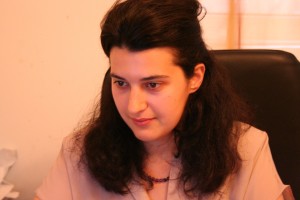February 29, 2016
By Andreea Grecu
Dead Man (or Woman) Walking
For over 16 years, I’ve been having a déjà-vu every time an anniversary comes around or every time a commemoration takes place. In 2016, the events dedicated to Constantin Brâncuși were enriched with speeches, symposiums and other attempts to highlight the importance we believe we attribute to the artist and his works. Is that so?
1999 premiers the movie “Green Mile”, where one of the two bad guys – can you imagine? – is not the guy on death-row, but a representative of the law. The guard adds to the general unhappiness of it all by yelling “Dead Man walking!” while he was escorting a new prisoner sentenced to death. I also feel the need to yell “Patrimony that is about to be destroyed!” And seeing as how January was packed full of commemorations, symposiums and speeches, and February followed up with the same kind of events, who better to dedicate them all to but to a celebrity born on February 19th (1876): Constantin Brâncuși.
The story begins with the restoration gone out of hand in Târgu Jiu (“A scandalous restoration at The Gate of the Kiss”, Alin Ion, Adevărul October 27th 2013), followed by the failure to negotiate buying Wisdom of the Earth, while in the town of Hobiţa, the sculptor’s childhood home was destroyed and turned into a chicken field (“Brâncuși’s childhood home, now a barn for his great-great-granddaughter’s livestock”, Gabriel Mladin, Jurnalul Național, July 3rd 2011).
And while we’re on the topic of official speeches that didn’t have any impact whatsoever (see above paragraph), we conclude with the fact that the workshop in Paris, situated near Centre Pompidou, captures the artist’s true spirit and the feel of his creative environment. It wasn’t a coincidence that the Ministry of Culture visited the workshop as a symbolic pilgrimage.
What would have been the communist authorities decision regarding the Column in Târgu-Jiu had the enraged activist succeeded in tearing it down with a tractor back in the 50s? Maybe they would have decided to melt its material and use it to make a symbol for those times, a sickle and hammer, a brave leader of fighting for peace, a founding father of International Communism. What seemed unshakable in the 50s came crushing down one bloody December. But the lack of memory persists; same with the act of trying to destroy the Column of endless gratitude that proves how easy it is to forget or to erase important moments for our nation from recent history.
I think that every monument that physically disappeared an alarm goes out, reminding us how much we’ve forgotten the contribution of people that help built Romania. I also think that the lack of culture and the attempt to remove History as a school subject are equal to attacks on the nation’s capacity to be reborn, a decade from now, maybe more. The more we forget who we are, the closer we get to annihilating ourselves.
The Romanian state does not own works by Constantin Brâncuși for the future Museum, a museum that everyone is talking about and steps are being taken in order to build it soon. The way in which we relate to the father of contemporary sculpture says a lot about us: speeches won’t save works of art, and funeral crowns won’t hold up walls. Instead, the actual measures taken in order for us and other countrymen to remember Brâncuși’s true message are the ones that really make a difference. Do we want recognition as Europeans? Then lets all unite! But let’s stay united till the end: Brâncuși’s people, Eugen Ionescu’s people. Let’s try to understand value and cross the black pit of non-value that is slowly but surely consuming Romania. Gentlemen of the spirit, ladies of the mind. Is it really that hard?
The Column of endless gratitude holds a message for future generations. A series of 16 octahedral modules, with one half of a module at the upper and lower extremities. So simple, and yet so complicated. Brâncuși’s “beads” speaks to us about the simplicity of our decisions. We bend or we don’t, we stand tall or we don’t. It’s painful to stand straight. But this trait also belongs to the entire human race. Let’s try to keep our humanity. There are other species present among us.
POSTED BY
Andreea Grecu
Andreea Grecu is a cultural manager and lecturer. Between 1999-2004, then from 2009 onward, she is active on the NGO scene, as member of cultural associations and professional unions in domanis such a...




